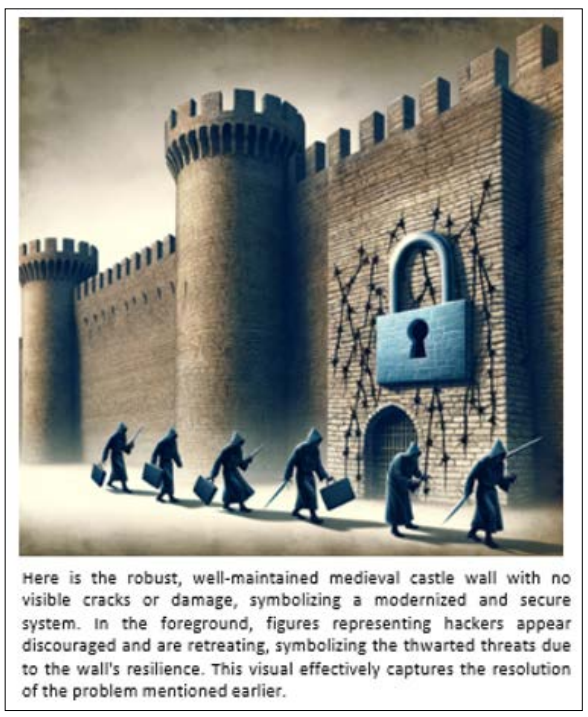Author(s): Vijayasekhar Duvvur
Legacy systems, the longstanding pillars of countless organizations, are rapidly morphing into security nightmares. Built with technologies and coding practices from a bygone era, these systems lack the sophisticated security features and robust architecture of their modern counterparts. This disparity creates a gaping security hole, making legacy systems prime targets for cyberattacks with increasingly sophisticated techniques. This article explores the inherent vulnerabilities plaguing legacy systems and presents modernization as the cornerstone solution for safeguarding sensitive data and fortifying an organization’s security posture in today’s dynamic digital landscape.
The digital landscape is on a relentless march forward, leaving legacy systems, once the reliable workhorses of countless organizations, struggling to keep pace. Developed with older technologies and coding practices, these systems often lack the robust security features and architecture that are hallmarks of modern platforms. This disparity translates into a critical security gap, making legacy systems increasingly susceptible to cyberattacks. This article delves into the inherent security weaknesses of legacy systems and presents a compelling case for modernization as the essential solution for organizations seeking to protect their data and secure their digital environment.
Problem: The Inherent Vulnerabilities of Legacy Systems Legacy systems are riddled with inherent security drawbacks that make them sitting ducks for cyberattacks [1,2]. Here’s a closer look at the key vulnerabilities:

Outdated Security Protocols: Legacy systems often cling to obsolete security protocols like outdated encryption algorithms and weak authentication mechanisms. These protocols are no match for the ever-evolving arsenal of hacking techniques employed by attackers, who can exploit these weaknesses to gain unauthorized access to sensitive data.
Lack of Patch Management: Many vendors have discontinued support for legacy systems, leaving them without critical security patches that address known vulnerabilities. These unpatched vulnerabilities become gaping holes in the system’s security, inviting attackers to exploit them.
Limited Integration Capabilities: Legacy systems were not designed for seamless integration with modern security solutions like firewalls, intrusion detection systems, and endpoint security software. This lack of integration makes it difficult, if not impossible, for organizations to implement a comprehensive security posture that effectively shields their systems and data from cyber threats.
Code Vulnerabilities: Legacy code, often written decades ago, might harbor inherent vulnerabilities due to outdated coding practices and a lack of secure coding principles. These vulnerabilities, like buffer overflows and SQL injection flaws, can be exploited by attackers to gain unauthorized access, manipulate data, or even take complete control of the system [3].
Limited Audit Trails: Legacy systems might have limited or nonexistent audit trails, which are essential for tracking user activity and identifying suspicious behavior. This lack of audit trails makes it difficult to detect security incidents, hampering an organization’s ability to respond promptly and effectively to cyberattacks.
Solution: Modernization - The Path to Enhanced Cybersecurity Creating robust cybersecurity through the implementation of modernization techniques involves a strategic approach that incorporates the latest technologies, best practices, and methodologies to secure digital assets and infrastructure. Here’s a comprehensive guide to enhancing cybersecurity through modernization [4,5].

While enhanced security is a compelling reason to modernize,the benefits extend far beyond
Case Study 1: Banking Sector
Company: Global Bank Corp
Problem: The bank’s 30-year-old core banking system was slow and susceptible to cyber-attacks.
Strategy: The bank opted for a full system replacement with a modern core banking platform that integrates real-time processing and advanced security features.
Outcome: Post-modernization, the bank reported a 40% increase in transaction speed and a significant reduction in downtime. Security incidents dropped by 75% within the first year.
Case Study 2: Government Agency
Company: City Transport Authority
Problem: The agency’s fare collection system was based on obsolete technology, leading to frequent system failures and inefficiencies.
Strategy: The agency rearchitected the entire system using a microservices approach, allowing for better scalability and integration with modern payment technologies.
Outcome: Modernization led to a 50% increase in system reliability and a 30% cost reduction due to decreased maintenance needs. Additionally, customer satisfaction improved due to the flexibility and convenience of new payment options.
Case Study 3: Retail Chain
Company: QuickShop Retail Group
Problem: The retail chain’s point-of-sale (POS) system was unable to handle high transaction volumes during peak hours, causing delays and customer dissatisfaction.
Strategy: QuickShop implemented a distributed computing solution to handle transactions more efficiently and added layers of security to protect customer data.
Outcome: The modernized POS system handled transactions 60% faster than the old system, and improved security measures led to a marked decrease in data breaches.
Conclusion: A Secure and Efficient Future with Modernization The risks associated with maintaining legacy systems are far too significant to ignore. Modernization is not just a strategy for business efficiency; it is a crucial component of an organization’s cybersecurity defense. As technology continues to advance and cyber threats become more complex, the need for up-to-date systems that can defend against evolving threats becomes ever more critical. Organizations must view modernization as an essential investment in their future security and stability [8].
